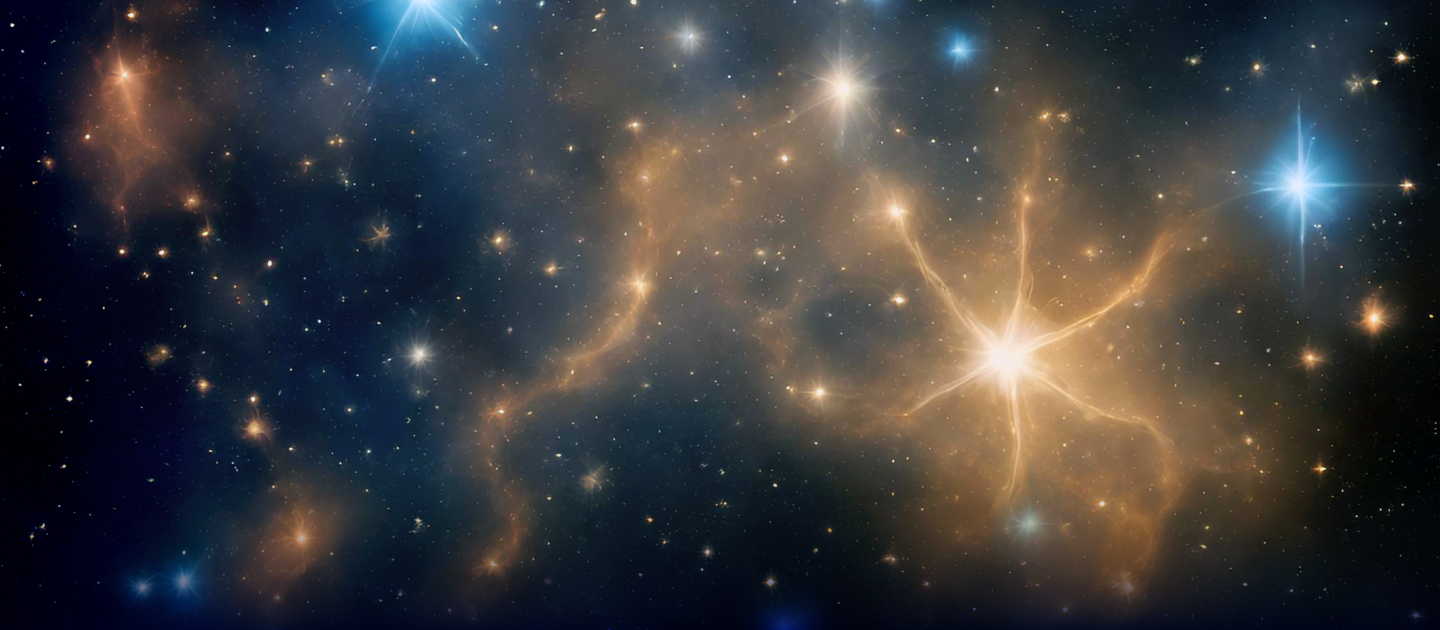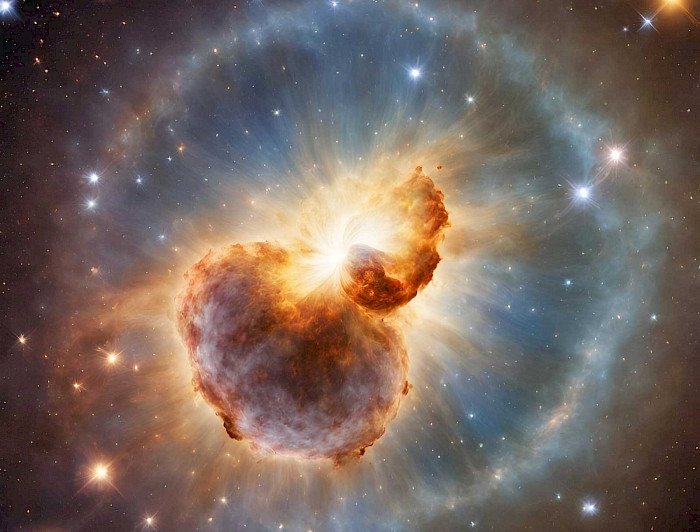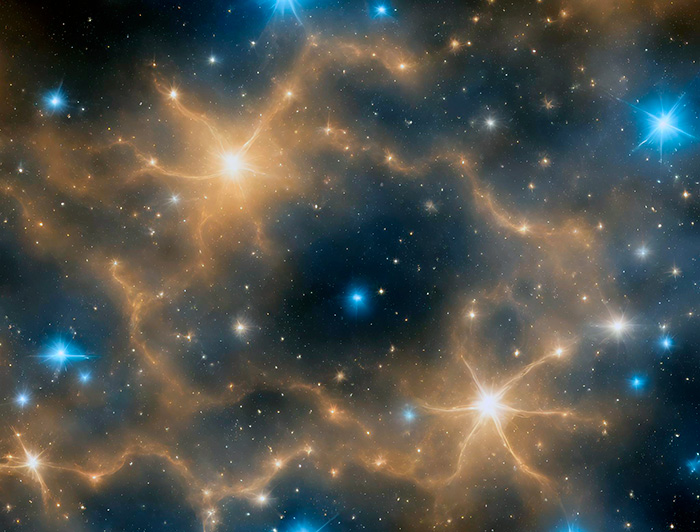
How Were Galaxies Formed?
UC Institute of Astrophysics researchers are participating in the LAGER project, an international initiative aimed at discovering the origins of galaxies. Already in its second phase, the project uses a new filter to study galaxies that are further away and may have been involved in the process of the universe's reionization.

photo_camera "The emergence of galaxies is the latest significant change in the evolution of the universe, but we need to discover which factors were responsible for their appearance," said Professor Felipe Barrientos. (Image design: Roma Montoya)
In the early stages of its existence, the universe consisted of a high-temperature "cosmic soup" that prevented radiation from traveling freely. However, everything changed when, due to its expansion, it cooled enough to allow free electrons to be captured by atomic nuclei (mostly made up of hydrogen), giving rise to neutral atoms. This process created a dark fog in space.
After that, the first stars and galaxies formed, and their radiation gradually cleared a path through this fog, producing fully ionized regions through their energy (known as ionization bubbles). Thus began the so-called reionization of the universe.
How and why did this process occur? The answer to this mystery may be found in the work of the LAGER (Lyman Alpha Galaxies in the Epoch of Reionization) project, which includes researchers from China, the U.S., and Chile, including academics from the UC Institute of Astrophysics: Felipe Barrientos, Gaspar Galaz, Leopoldo Infante, and Franz Bauer.
LAGER Project

"The emergence of galaxies is the latest significant change in the evolution of the universe, but we need to discover which factors were responsible for their appearance. This is what the LAGER Project is trying to find out," said Felipe Barrientos, director of the Institute of Astrophysics and a member of the research team.
To find answers, researchers are studying the first galaxies that formed. To detect them, they measure the presence of hydrogen in their emission lines, particularly in the Lyman Alpha lines.
"About 400,000 years after the Big Bang, hydrogen atoms recombined with their electrons and remained in a neutral state. From that moment, the universe had an opaque appearance, like covered in dense fog. Later, the first stars and galaxies appeared, and their radiation interacted with this fog. Energized photons removed the electrons from hydrogen atoms, ionizing them," explained Professor Barrientos.
"We have found these objects, studied them, and are about to push the limits of knowledge by explaining how this transition in the universe occurred.” – Felipe Barrientos, Director of the Institute of Astrophysics.
The research focuses on Lyman Alpha (in the first line of hydrogen) as its signal is one of the most intense for locating early galaxies. The research team uses a type of filter that only allows these emission lines to pass through.
"The first part of the LAGER Project, which lasted 5 years, found more than 200 galaxies. This year, which marks the beginning of the second phase, they are working with a new filter (NB1006) that allows observation at an earlier age," said Felipe Barrientos. Regarding the equipment, the researcher mentioned it costs around $100,000, is at the Tololo Observatory, located in the Coquimbo region, at the north of Chile and its purchase was possible thanks to the collaboration with the Chinese center CASSACA (Chinese Academy of Sciences South American Center for Astronomy)”.
Although the technique is quite clear, the complexity of the study lies in finding galaxies dating back to the reionization age. "It’s searching for a needle in a haystack. In this case, we're talking about countless needles in countless haystacks," explained the PhD in astronomy. Fortunately, the project has borne fruit. "We have found these objects, studied them, and are about to push the limits of knowledge by explaining how this transition in the universe occurred." This new filter should allow us to access new galaxies that will help us better understand the process of the universe's reionization," concluded Felipe Barrientos.


